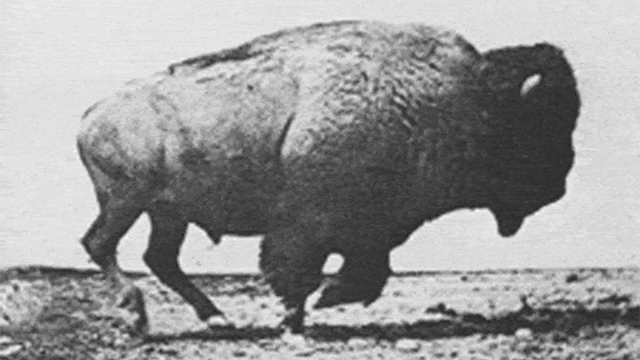..
‘Kill Every Buffalo You Can! Every Buffalo Dead Is an Indian Gone’
The American bison is the new U.S. national mammal, but its slaughter was
once seen as a way to starve Native Americans into submission.
By J. Weston Phippen
MAY 13, 2016
It was near the end of September, an unusually warm week in 1871, and William “Buffalo Bill” Cody and a group of wealthy New Yorkers stood atop a grassy hill near the Platte River in Nebraska, where, two miles off, they spotted six huge brown beasts.
Cody was a legend of the frontier era, part myth conjured in dime novels. The men from New York had expected to find him as a “desperado of the West, bristling with knives and pistols,” but they did not. Cody was loquacious and friendly, an expert hunter. He knew that with the wind blowing from behind, the men risked their scent being carried to the animals and scaring them away. Then again, a buffalo is a lumbering, hirsute cow, and the men were outfitted with some of the quickest horses and held the best guns owned by the United States Army, which was outfitting the hunting expedition. The Army wasn’t in the business of guiding hunting trips for soft-skinned Wall Streeters, but it was in the business of controlling the Native Americans in the area, and that meant killing buffalo. One colonel, four years earlier, had told a wealthy hunter who felt a shiver of guilt after he shot 30 bulls in one trip: “Kill every buffalo you can! Every buffalo dead is an Indian gone.”
Cody and the men made a contest of the hunt. Whoever killed the first buffalo would win an engraved silver chalice. Years later, in an article he wrote for the magazine Cosmopolitan, Cody would call this trip the best equipped he’d ever taken. The Army had supplied an armed escort and 25 wagons filled with cooks, linen, china, carpets for their tents, and a traveling icehouse to keep their wine chilled. The reason for such extravagance was undoubtedly because the New Yorkers were well-connected, but also because Major General Phillip Sheridan, the man with the task of forcing Native Americans off the Great Plains and onto reservations, had come along with them. This was a leisure hunt, but Sheridan also viewed the extermination of buffalo and his victory over the Native Americans as a single, inextricable mission––and in that sense, it could be argued that any buffalo hunt was Army business. After the men circled the herd, they charged down the hill, chasing after the six buffalo, eager for the first kill.
 |
| Buffalo Bill Cody |
Many things contributed to the buffalo’s demise. One factor was that for a long time, the country’s highest generals, politicians, and even then President Ulysses S. Grant saw the destruction of buffalo as solution to the country’s “Indian Problem.”
Before Sheridan joined Cody and the New Yorkers on the hunt, and before he oversaw the relocation of Native Americans on the plains, he was a major general for the Union during the Civil War. It was there he learned the power of destroying enemy resources. He’d used the same scorched-earth strategy that William Tecumseh Sherman, then a major general, used in his March to the Sea, tearing up railroad ties, toppling telegraph poles, and lighting nearly all of Atlanta and anything an infantryman could digest ablaze. After the war, President Grant asked Sherman and Sheridan to command armies in the Great Plains.
Sherman knew that as long as the Sioux hunted buffalo,
they’d never surrender to life with a plow.
There is much more to this disturbing story at The Atlantic.


No comments:
Post a Comment